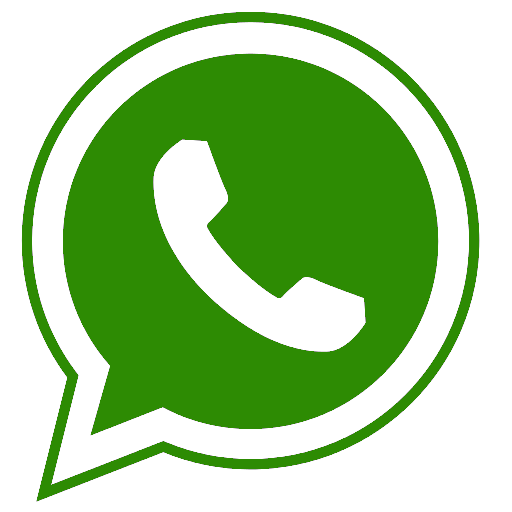Every business must constantly seek out new clients, but it’s critical to ensure that this expansion of the clientele doesn’t come at the expense of profitability. One of the most crucial steps in controlling marketing costs and turning a profit for your company is learning how much it costs to acquire a new client.
Customer acquisition cost (CAC), which includes everything from ad spend to staff costs, is a useful indicator to assess the entire return on investment (ROI) of your marketing programs. If you’re unfamiliar with it, it could seem challenging to calculate.
Through this article, let’s understand what exactly is CAC, how is it calculated, why is it important for a business, and how to reduce it.
What is customer acquisition cost (CAC)?
The price a company pays to bring on a new client is known as its customer acquisition cost, or CAC. It is a metric that helps businesses understand the amount they need to invest in marketing, sales, and other activities in order to acquire a new customer. CAC is calculated by dividing the total cost of acquiring customers (including marketing and sales expenses) by the total number of new customers acquired during a specific period of time. It is an important metric for businesses to evaluate the effectiveness of their marketing and sales efforts and to determine the return on investment (ROI) of acquiring new customers.
How is customer acquisition cost calculated?
Here’s the formula to calculate CAC:
CAC = Total Marketing and Sales Expenses / Total Customers Acquired
To calculate CAC, businesses need to add up all their marketing and sales expenses during a specific period (e.g., a month or a year). This may include costs related to advertising, marketing campaigns, sales team salaries, commissions, software tools, etc. Then, the total number of customers acquired during that same period should be determined (this can be obtained from sales data or other customer management systems).
By dividing the total marketing and sales expenses by the number of customers acquired, businesses can calculate the average cost per customer. This figure helps businesses evaluate the effectiveness and efficiency of their marketing and sales strategies and allows them to explore ways to optimize their customer acquisition process.
Why is customer acquisition cost important?
Customer acquisition cost (CAC) is important for several reasons:
1. Financial Planning: CAC helps businesses in determining how much money they need to spend on sales and marketing efforts to acquire new customers. By understanding and analyzing the cost associated with customer acquisition, businesses can effectively plan their budgets and allocate resources to ensure profitable growth.
2. Return on Investment (ROI) Analysis: CAC helps in evaluating the profitability of acquiring new customers. By comparing the CAC with the customer lifetime value (CLTV) (i.e., the potential revenue generated by a customer during their relationship with the business), businesses can determine the return on investment for each customer acquisition. This analysis enables businesses to focus on acquiring customers with higher CLTV and optimize marketing strategies accordingly.
3. Business Growth and Scalability: CAC is crucial for business growth as it indicates how efficiently a business is acquiring customers. By monitoring CAC, businesses can identify areas of improvement, implement strategies to reduce acquisition costs, and scale their customer acquisition efforts effectively. This helps in increasing market share, revenue, and overall business growth.
4. Competitive Analysis: Comparing CAC with industry benchmarks and competitors’ acquisition costs helps businesses gauge their competitiveness. If a business has significantly higher CAC compared to competitors, it may indicate inefficiencies in customer acquisition strategies or a need to optimize marketing campaigns to improve competitiveness in the market.
5. Marketing Strategy Optimization: CAC data provides insights into the effectiveness of different marketing channels, campaigns, and tactics. By analyzing CAC across various channels, businesses can identify the most cost-effective and efficient channels for customer acquisition. This enables businesses to optimize marketing strategies, allocate resources appropriately, and focus on channels that yield the best results.
Overall, understanding CAC is essential for businesses to make data-driven decisions, improve profitability, and ensure sustainable growth in the competitive marketplace.
5 ways to decrease your customer acquisition cost
1. Improve Your Marketing Targeting: Rather than casting a wide net and hoping to catch customers, focus your marketing efforts on a specific target audience that is more likely to be interested in your product or service. This allows you to reach potential customers more efficiently and reduce your acquisition costs.
2. Optimize Your Website & Landing Pages: Make sure your website and landing pages are user-friendly, visually appealing, and optimized for conversion. A well-designed website can help increase the number of visitors who convert into paying customers, thereby reducing your acquisition costs.
3. Utilize Social Media & Content Marketing: Engage with your target audience on social media platforms where they are most active. Develop a content marketing strategy to provide valuable and informative content relevant to your industry. By building a strong online presence and establishing your brand as an industry authority, you can attract potential customers organically and reduce the need for expensive advertising campaigns.
4. Implement Referral Programs: Encourage your existing customers to refer your products or services to their friends and family by offering incentives or rewards for successful referrals. Referral programs can be a cost-effective way to acquire new customers as people are more likely to trust recommendations from people they know.
5. Leverage Data & Analytics: Utilize data and analytics tools to understand which marketing channels and strategies are most effective in driving customer acquisition. By tracking and analyzing data, you can allocate your resources towards the most cost-efficient methods and optimize your marketing efforts accordingly.
How to improve customer acquisition cost?
Here are some strategies to improve customer acquisition cost:
1. Identify Most Effective Acquisition Channels: Analyze your customer data to determine which channels are performing the best in terms of bringing in new customers. Focus your resources and efforts on these channels to optimize your customer acquisition cost.
2. Target Specific Customer Segments: Instead of trying to appeal to a broad audience, narrow down your target market and focus on specific customer segments that are more likely to convert. By tailoring your marketing efforts towards these segments, you can increase the chances of acquiring customers at a lower cost.
3. Refine Your Advertising Campaigns: Continuously monitor and optimize your advertising campaigns. Experiment with different messaging, visuals, targeting options, and ad formats to find the combination that generates the highest conversion rates at the lowest cost.
4. Optimize Your Website & Landing Pages: Ensure that your website and landing pages are designed to convert visitors into customers. Improve the user experience, simplify the navigation, and make sure the pages load quickly. A well-designed and user-friendly website can increase conversions and lower customer acquisition costs.
5. Implement Referral Program: Encourage your existing customers to refer their friends and colleagues to your business by offering incentives or rewards. Word-of-mouth marketing through referrals can be a highly effective and cost-efficient way to acquire new customers.
6.Develop Strategic Partnerships: Identify complementary businesses or influencers in your industry and consider forming partnerships or collaborations. By leveraging their existing customer base or influence, you can reach a wider audience and acquire customers at a lower cost.
7. Focus On Customer Retention: It can be more expensive to acquire new clients than to keep current ones. By providing excellent customer service and implementing strategies to increase customer loyalty, you can reduce churn rates and maximize the lifetime value of your customers.
8. Analyze & Optimize Your Sales Funnel: Identify any bottlenecks or areas of friction in your sales process. By optimizing each stage of the sales funnel, you can increase conversion rates and reduce the customer acquisition cost.
9. Leverage Analytics & Data: Utilize data analytics tools to track and measure the effectiveness of your customer acquisition efforts. Analyze the data to gain insights into customer behavior and preferences, and use this information to refine your strategies and campaigns.
10. Continuously Test & Iterate: Customer acquisition is an ongoing process that requires constant testing, learning, and iteration. Continuously monitor the performance of your campaigns, experiment with new tactics, and learn from both successes and failures to improve your customer acquisition cost over time.
SUMMING UP
Understanding and monitoring the Customer Acquisition Cost is crucial for retail businesses to ensure the effectiveness and profitability of their marketing efforts. By optimizing CAC, businesses can allocate their marketing budget efficiently, evaluate ROI, and focus on customer retention, ultimately driving growth and success in the retail industry.

